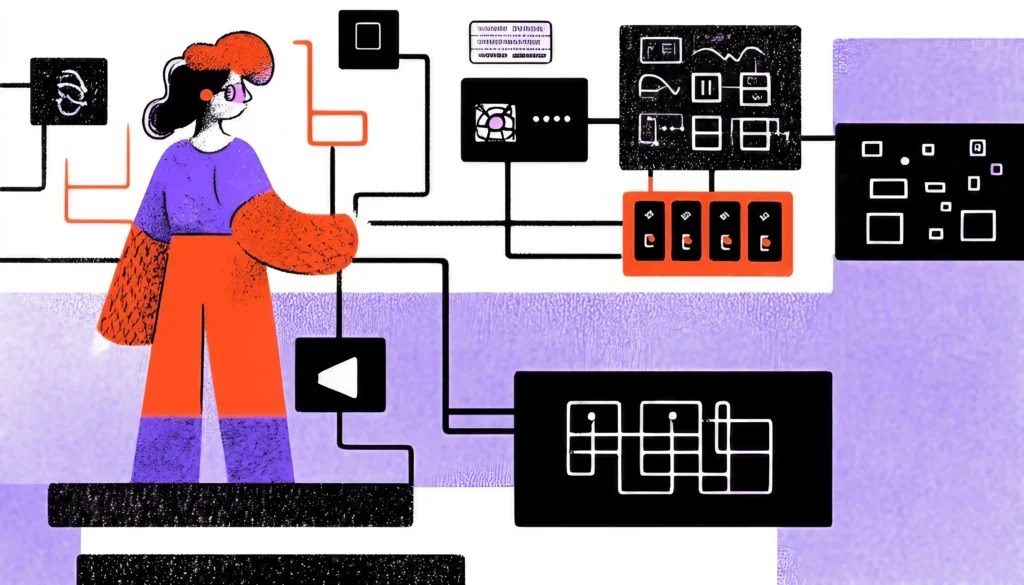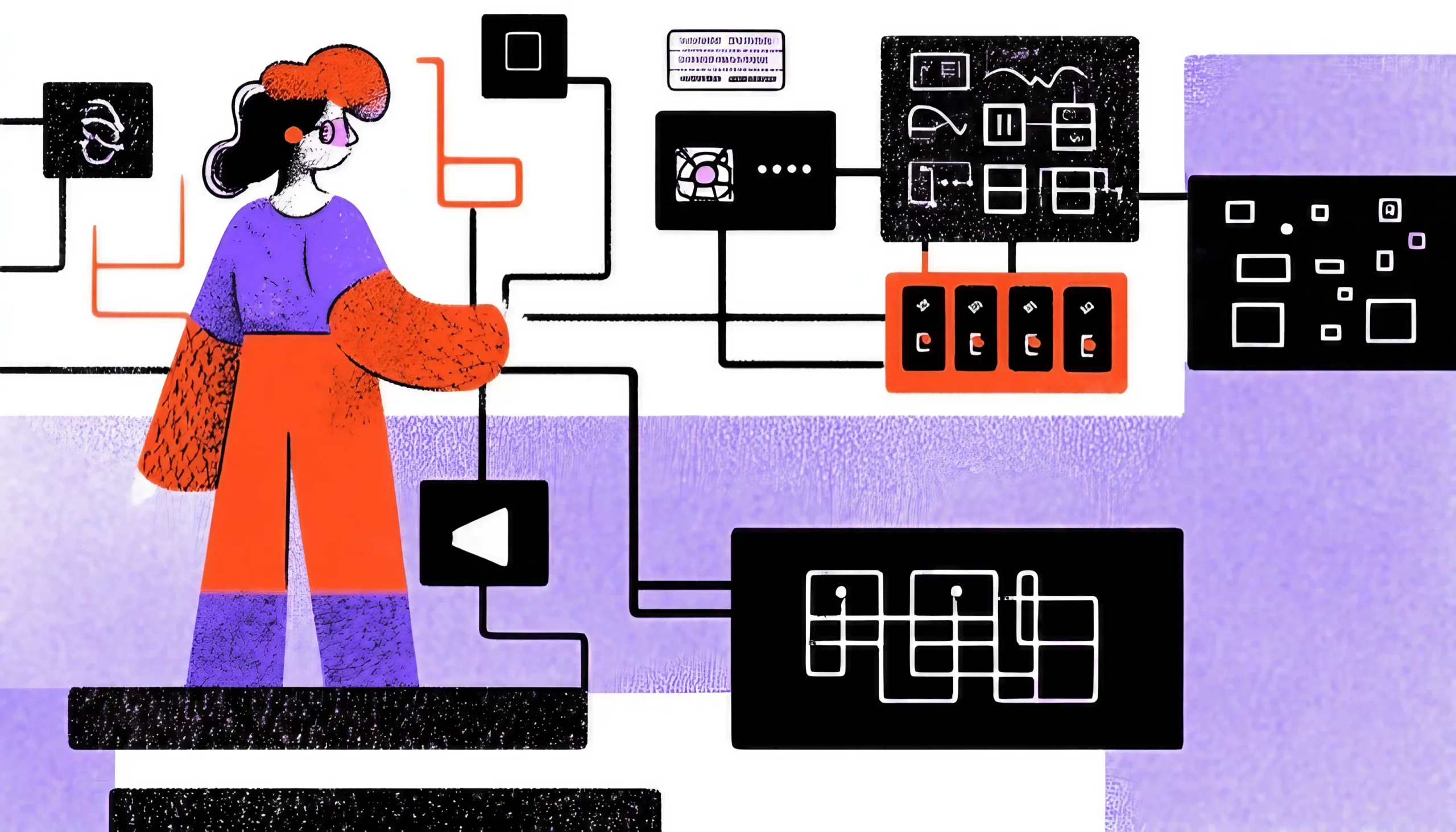Why IA Makes or Breaks UX
Information Architecture (IA) is the quiet backbone of every digital product. It’s the skeleton beneath the skin, the city grid beneath the bustling streets, and the library system that makes sure you can find the right book in seconds. Without it, even the slickest interface collapses into chaos.
Here’s the hard truth: users don’t forgive bad IA. They don’t say, “Oh, I bet the design team had internal politics.” Instead, they become frustrated, abandon your product, and tell their friends that it was difficult to use.
For mid-level and senior designers, IA isn’t just about drawing a sitemap—it’s about strategic problem-solving. It’s about aligning user mental models with business goals in a way that scales. Done well, it’s invisible. Done poorly, it becomes the glaring friction point in every interaction.
So let’s dig deep into the top five IA mistakes, how they show up in real projects, and—most importantly—how to avoid them.
Designing for the Business, Not the User
Why Internal Agendas Wreck IA
This is mistake number one for a reason. Too many IAs are built as mirrors of organizational structure rather than maps of user behavior.
Consider this: the marketing team would like a section dedicated to campaigns. Product wants features highlighted. Sales insists on burying pricing until the demo call. The result? The outcome is an IA that bears a striking resemblance to an internal organizational chart. It makes perfect sense to the company but zero sense to the user.
Ever clicked on a “Resources” menu only to find a confusing mashup of white papers, blog posts, webinars, and FAQs all lumped together? That’s what happens when IA reflects business silos, not user needs.
Case in Point: The Insurance Portal
A health insurer’s website mirrored its departments: Claims, Billing, and Provider Relations. While it matched the org chart, it didn’t match the user’s journey. Members looking to “Pay My Bill” or “Find a Doctor” got lost in internal jargon. The number of support calls increased significantly. After running open card sorting, the team reorganized content by tasks and goals (e.g., “Manage My Plan,” “Get Care,” “Pay a Bill”). Call volume dropped, and user satisfaction rose.
How to Avoid It
Card Sorting: Run sessions to reveal how users group tasks.
Tree Testing: Validate navigation flows before launch.
Task-Based Labels: Replace internal categories with user tasks (e.g., “Transfer Money” instead of “Funds Management”).
Remember, IA isn’t for your stakeholders—it’s for your users. Your job is to translate business complexity into user-friendly pathways.

Overcomplicating Navigation
When “Helpful” Becomes Overwhelming
More options equal more power, correct? Wrong. Overstuffed navigation is the Cheesecake Factory menu of UX: overwhelming, paralyzing, and likely to push users away.
The psychology behind it is choice overload. When faced with too many options, users hesitate, second-guess themselves, and often abandon the task altogether.
Case Study: The Mega-Menu Problem
A major retailer launched a mega-menu with over 120 links. Categories overlapped (“Shoes” vs. “Footwear”), and seasonal campaigns cluttered prime space. Analytics showed users were bouncing after scanning menus for too long.
After auditing and grouping items into broader categories, navigation clicks became more predictable, and bounce rates improved by 30%.
How to Avoid It
- Progressive Disclosure: Show top-level categories first. Reveal details only when users drill down.
- Logical Grouping: Use hierarchy, not a laundry list.
- Analytics-Driven Pruning: Remove or merge items with low engagement.
Think about Amazon. At first, you see “Electronics.” Then, “Laptops.” Then, “MacBooks.” Each layer narrows the funnel without overwhelming the user.
As a senior designer, your role is to say no to clutter. Fight the instinct to cram. Guide users with clarity, not chaos.

Ignoring Scalability
Today’s IA Isn’t Tomorrow’s
The third mistake is subtle but deadly: creating an IA that works for today but collapses under tomorrow’s growth.
This is especially common in startups. They launch with a lean IA—perfect for an MVP—but as features multiply and markets expand, the structure buckles.
Case Study: SaaS Platform Expansion
A SaaS platform launched with simple IA: Dashboard, Reports, and Settings. But as they added advanced analytics, integrations, and custom workflows, the nav ballooned with submenus. Users struggled to know where features lived, and customer churn increased.
The fix? They redesigned around a modular IA, grouping by workflows rather than features. This modification made room for new categories without breaking the system.
How to Avoid It
- Design IA as Lego blocks: modular, flexible, and expandable.
- Plan for Localization: Will your labels scale to other languages?
- Ask Future Questions: “If we add 50% more content, where will it live?”
Investing in scalability early saves teams from painful redesigns later. It’s less expensive to build flexibility upfront than to retrofit later.

Poor Labeling and Terminology
The Danger of Jargon
Words matter. Labels are micro-interactions in themselves, guiding users through the experience. Get them wrong, and your IA becomes a maze.
The most common mistake? Internal jargon. Companies love clever names or internal terms, but users just want clarity.
Case Study: The Bank That Confused Everyone
One bank labeled its transfer function as “Funds Reallocation.” Sound polished? Maybe. But users typed “Transfer” into their search and got no results. The bank’s call center was overwhelmed with simple transfer questions.
When they re-labeled the feature “Transfer Money” across IA, support calls dropped by 40%.
How to Avoid It
- Use Plain Language: Clarity trumps cleverness.
- Maintain Consistency: Don’t call it “Cart” in one place and “Bag” in another.
- Test Labels: Run usability tests specifically on labels. If users hesitate, refine.
Think of labels as road signs. Nobody wants riddles on a highway. They want “Exit 23: Gas, Food, Lodging.”

Forgetting the Cross-Channel Journey
IA Doesn’t Stop at Your Website
Here’s the final mistake—and it’s a big one: treating IA as if it’s only about your site or app. In reality, users interact with your brand across multiple touchpoints—email, support portals, apps, and offline experiences.
When these touchpoints don’t align, users experience friction.
Case Study: Telecom Cross-Channel Failure
A telecom company promoted deals via email, but the app navigation used different categories and terminology. Users clicked from email only to land on an app with no clear path to the offer. Frustrated, they churned.
By aligning taxonomy across channels (“Plans,” “Offers,” “Support”), the company reduced drop-offs and improved cross-channel trust.
How to Avoid It
- Journey Mapping: Map IA across entire ecosystems, not just screens.
- Consistent Terminology: Keep labels unified across web, app, and marketing.
- Cross-Team Collaboration: Break silos between product, marketing, and support.
IA isn’t about menus or wireframes. It’s about shaping the way users navigate complexity. Done well, it’s invisible. Done poorly, it becomes the friction users never forgive.
To recap, avoid these five traps:
- Designing for the business, not the user.
- Overcomplicating navigation.
- Ignoring scalability.
- Using poor labeling and jargon.
- People often overlook the importance of the cross-channel journey.
For mid-level to senior designers, mastering IA means moving beyond the basics. It’s not just about organizing information—it’s about designing trust, scalability, and seamless journeys.
So, next time you’re restructuring navigation or planning a redesign, pause and ask: Is my IA built for users today—and resilient enough for tomorrow?
That’s how you turn IA from an afterthought into a strategic superpower.








